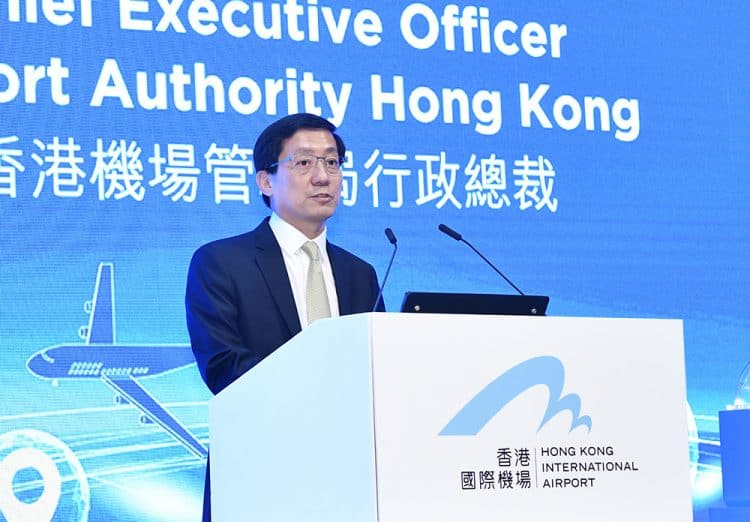An RFID Label Affixing Robot assisting in manual work, driverless tractors, a Virtual Reality training center, and the application of a digital twin to monitor real-time operations at the Hong Kong International Airport (HKIA).
These are some of the technological innovations and smart applications of the Internet of Things (IoT) on full display at the recent two-day Smart Airport Technovation Conference and Exhibition at the Hong Kong Convention and Exhibition Centre.
"As one of the world’s major hub airports, HKIA has been using IoT technology to create a more pleasant traveller journey and streamline operations. On the operational side, we can analyze real-time data to help us to allocate resources more effectively and resolve problems before they arise,” said Fred Lam, Chief Executive Officer of the Airport Authority Hong Kong (AA).
“By coupling IoT with big data analysis, we will gain a deeper understanding of travelers’ needs, preferences and behaviors to offer them customised retail and catering selections,” he added.
HKIA has reason to explore the use of technology, particularly IoT and analytics. As the no. 1 cargo airport in the world, it handles nearly 5 million tons of freight (4.9 million tons in 2017) and provides 43 parking stands for cargo aircraft. It also handles approximately 72.9 million passengers annually traveling to and from over 220 destinations.
In October 2018 alone, HKIA handled 6.19 million passengers and 36,500 flight movements, marking year-on-year increases of 0.5 percent and 1.4 percent, respectively. The airport also processed 451,000 tons of cargo and airmail, a 2.8 percent rise over the same month last year.
The HKIA said the growth in passenger traffic was mainly driven by Hong Kong resident travel, which registered a 7 percent year-on-year increase over the same month last year.
Global market research company Euromonitor International revealed in its “Top 100 City Destinations 2018” that Hong Kong is still the most visited city in the world, for the eighth year in a row.
Recently, the AA announced that its Intelligent RFID-embedded Baggage Loading Robotics for Automated Baggage Reconciliation, jointly developed with E-Business Solutions Limited, clinched the Winner Award in the “Technology of the Year – Internet of Things” category at the 18th Asia Pacific Information and Communications Technology Alliance (APICTA) Awards.
"Our RFID-embedded baggage loading device can identify, record and verify the correct baggage to be loaded onto aircraft and send out alerts in case of mismatches," explained Amen Tong, General Manager, Technical Services for the AA.
"It greatly enhances the efficiency and accuracy of baggage loading for departure flights. The AA will continue to leverage technology to enhance both the efficiency and safety of its airport operations and passenger experience," he said.
For the first time this year, the HKIA’s Smart Airport Technovation Conference and Exhibition handed out the first Smart Airport Technovation Awards to further stimulate innovation and recognize the airport community’s achievements in new technological explorations.
The winners of the inaugural award include: Beauty&You (Retail Experience), China Aircraft Services Limited (Training and Development), Cathay Pacific Catering Services (Process Automation), Hong Kong Air Cargo Terminals Limited (Operational Excellence), and Hong Kong Aircraft Engineering Company Limited (Integrated Solution).
"With more than 6,000 staff and over half a million tools to manage, optimising the resource allocation is a major challenge for HAECO. Use of IoT and mobile technologies are very effective in enabling innovative ideas in the business to be delivered in a very timely manner," said Jessica Cheung, General Manager - Information Technology at Hong Kong Aircraft and Engineering Company Limited (Haeco).
Among the technologies used at Haeco include an RFID technology for personal tool management, compliance with safety regulations and operational efficiency; and a low-energy, Bluetooth-based real-time location system that can actively track equipment and parts. Meanwhile, long range, wide-area network technology ensures the timely deployment of ground service equipment.



